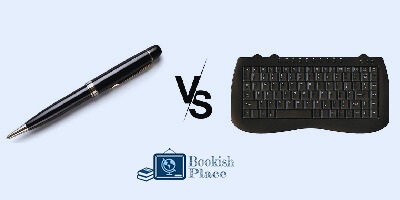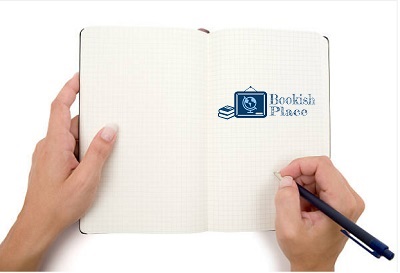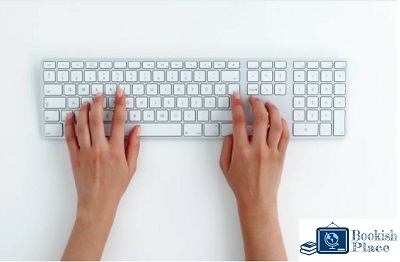Pen Vs Keyboard: Which is Better? Writing By Hand Vs Typing
In today’s fast-paced digital world, the age-old debate of pen vs keyboard, in other words, writing by hand vs typing, continues to captivate the minds of students, professionals, and creatives alike. The rise of technology has made typing the norm, with keyboards replacing pens as the primary tool for jotting down notes, composing essays, and drafting novels.
However, research suggests that the art of handwriting holds its own unique advantages, challenging the notion that typing is always superior. In this article, we delve into the intricacies of writing by hand vs typing, exploring the benefits of each approach and shedding light on their impact on memory, critical thinking, and creativity.
Contents
Evolution of Writing Tools

The evolution of writing tools has traversed a remarkable journey, reflecting humanity’s quest for efficient communication. From prehistoric cave paintings to sophisticated digital interfaces, the progression has been profound.
Early civilizations etched symbols on clay tablets, followed by the invention of the pen, enabling detailed manuscripts. The printing press revolutionized mass communication in the 15th century. The typewriter’s emergence enhanced writing speed in the 19th century, paving the way for modern keyboards and digital devices.
Today, touchscreens and styluses bridge the gap between handcrafted artistry and digital convenience. The evolution of writing tools mirrors society’s technological advancements and the relentless pursuit of more effective means of expression.
Pen Vs Keyboard: The Basic Comparisons
The pen and keyboard represent distinct writing tools with differing implications for communication. While pens offer a tactile connection, fostering creativity and engagement, keyboards prioritize speed and efficiency.

Writing by hand activates cognitive processes and aids memory retention, but typing facilitates easy editing and digital storage. The pen emphasizes individuality and the personal touch, while the keyboard underscores modernity and convenience.
The choice between pen and keyboard hinges on balancing the benefits of tradition and technology, fostering a dynamic interplay between the artistry of handwriting and the practicality of typing.
Writing By Hand Vs Typing: Unlocking The Cognitive Divide
The age-old debate of handwriting versus typing delves into the fundamental differences between these two modes of communication. Handwriting involves the tactile connection between pen and paper, engaging intricate motor skills and spatial awareness. This method demands slower processing, encouraging individuals to digest, summarize, and synthesize information as they write. This deliberate pace enhances memory retention and critical thinking.

On the other hand, typing offers speed and convenience. Modern keyboards allow rapid transcription, making it ideal for quick note-taking and efficient document creation. However, the swift nature of typing might come at the cost of depth. The act of typing tends to encourage verbatim transcription without deep comprehension, potentially limiting critical thinking and memory recall.
The choice between handwriting and typing depends on the task at hand. Handwriting excels in fostering comprehension, critical analysis, and creativity, making it a valuable tool for learning and complex cognitive processes. Typing shines in scenarios where speed and ease of editing are paramount, catering to the demands of modern productivity.
In essence, the decision boils down to a balance between the cognitive engagement of handwriting and the practicality of typing in our tech-driven world.
Benefits of Writing By Hand: Enhancing Creativity and Cognitive Engagement

Writing by hand is a timeless practice that offers a plethora of benefits beyond the mere act of putting pen to paper. This method engages various cognitive processes and promotes a deeper connection with the content being written. Here are some key advantages of writing by hand:
Visual Learning
Handwriting provides a canvas for visual learners to express their thoughts. The freedom to sketch infographics, mind maps, or other non-traditional layouts aids in visualizing connections and organizing ideas spatially.
Enhanced Learning and Memory
Psychological research reveals that handwriting supports memory and recall. Brain areas associated with comprehension and retention are more activated when notes are handwritten. The deliberate process of forming letters and words contributes to better memory retention.
Artful Expression
Handwriting allows individuals to infuse a personal touch and creativity into their writing. Neat penmanship or artistic cursive writing becomes an outlet for self-expression and can imbue the text with emotion and charm.
Emotional Outlet
A blank page invites a multitude of emotions and thoughts to flow freely. Writing by hand enables unfiltered expression, allowing thoughts, ideas, and emotions to pour onto the paper without restrictions.
Reduced Distractions
In a world filled with technological distractions, handwriting provides a focused and distraction-free environment. Away from screens and notifications, writers can immerse themselves entirely in the creative process.
Cognitive Engagement
Handwriting utilizes more areas of the brain, involving fine motor skills, spatial awareness, and hand-eye coordination. This engagement fosters deeper thinking and encourages a higher level of cognitive processing.
Unleashing Creativity
The act of physically writing stimulates creative thinking. The tactile sensation of pen on paper triggers unique connections and associations, often leading to novel ideas and innovative solutions.
Incorporating handwriting into daily writing routines can enhance creativity, boost memory retention, and deepen the connection between the writer and their words. While technology offers convenience and efficiency, the benefits of writing by hand remind us of the importance of engaging our minds and senses in the creative process.
Benefits of Typing: Efficiency and Technological Advantages

In an era dominated by technology, typing has become the go-to method for many forms of communication and documentation. This mode of writing offers several advantages, particularly in terms of efficiency and accessibility. Here are some key benefits of typing:
Speed and Efficiency
Typing on a keyboard allows for rapid transcription of thoughts and ideas. The ease of tapping keys enables writers to capture their ideas quickly, making it ideal for tasks that require a swift response or large volumes of text.
Editing and Formatting
Word processors offer robust tools for editing, formatting, and organizing text. The ability to easily rearrange paragraphs, apply different fonts, and adjust layouts streamlines the writing process and enhances the overall presentation of the content.
Digital Storage and Backups
Typed content is effortlessly stored and backed up in digital formats. This eliminates concerns about loss due to physical damage or misplacement. Cloud storage and synchronization provide easy access to documents across devices.
Multi-Tasking and Research
Typing enables writers to seamlessly integrate research and multitasking. With multiple tabs and applications open, writers can reference sources, gather information, and incorporate relevant data into their work.
Accessibility and Sharing
Digital documents can be shared instantly with collaborators, making collaboration and feedback more efficient. Online platforms allow for real-time co-editing and review, enhancing collaborative writing projects.
Reduced Physical Strain
While hand cramps and discomfort can accompany long writing sessions by hand, typing often results in less physical strain on the hands and fingers, especially when using ergonomic keyboards.
Consistency and Professionalism
Typed documents offer a consistent and polished appearance, making them well-suited for formal communication, business documents, and professional correspondence.
Search and Indexing
Digital text is easily searchable, allowing writers to quickly locate specific information within documents. This feature is invaluable for reference and research purposes.
While handwriting emphasizes cognitive engagement and creativity, typing excels in efficiency, ease of editing, and digital accessibility. The benefits of typing align well with the demands of the modern world, where speed, collaboration, and digital storage are integral to effective communication and documentation.
Impact on Critical Thinking: Handwriting Vs Typing

Sharpened critical thinking is a hallmark of handwriting. Writing by hand fosters critical thinking by compelling individuals to think more deeply about the information being recorded. This process prompts individuals to expand upon thoughts, forge connections between ideas, and develop nuanced understanding.
The physical act of handwriting also enables the use of colored inks for organization, enhancing the visual representation of relationships between concepts. Through this cognitive process, writers can extract meaning from text, interpret context, and foster analytical thinking.
Handwriting’s deliberate nature encourages a higher level of cognitive involvement, allowing for the exploration of abstract ideas, unconventional problem-solving, and a more profound grasp of complex subjects.
Effective Memory Recall: Handwriting or Typing?

When it comes to memory recall, the act of writing by hand shines. Effective memory recall is a distinctive advantage of handwriting. Longhand notes, characterized by the physical act of penmanship, provide a potent mnemonic tool. This stems from the interplay between manual writing, cognitive engagement, and memory consolidation.
When writing by hand, spatial relations between information bits are formed, activating regions of the brain linked to thinking and working memory. This process encodes and retains information more effectively, allowing for improved memory retrieval.
Handwriting’s intricate nature contributes to memory cues that reconstruct the original context and content, facilitating robust recall of lectures, meetings, and ideas, underscoring the enduring potency of this traditional method in enhancing memory processes.
Writing By Hand Vs Typing: Which is the Best Method for Creativity?

This question delves into the cognitive nuances of expression. Writing by hand offers a unique path to creativity. Handwriting, with its tactile engagement and deliberate pace, fosters a deep connection between thoughts and the page. The act of forming letters by hand engages a wider range of brain regions, enhancing memory and idea generation. The physicality of putting pen to paper allows unfiltered ideas to flow, unburdened by electronic limitations.
In contrast, typing is convenient but can be limiting in terms of fostering free-form creativity. Typing emphasizes speed and convenience but may sacrifice the intimacy and thoughtfulness inherent in the slow, deliberate strokes of a pen.
While both methods have their merits, handwriting’s intricate engagement tends to facilitate a more profound connection to one’s creative thoughts, offering a unique avenue for unfettered imagination and authentic expression.
Is Pen Still Mightier Than Keyboard?

In the modern era, the age-old adage “The pen is mightier than the sword” has evolved to consider whether the pen remains mightier than the keyboard. While the keyboard provides speed and efficiency in our digital world, the pen’s connection to creativity, memory retention, and personal touch cannot be overlooked. It sparks a different cognitive process and lends a unique intimacy to communication.
Balancing convenience and depth, the debate endures, highlighting that both tools have their place, and the true power lies in harnessing their respective strengths to suit the context of expression in today’s dynamic landscape.
FAQs
Is Typing Faster Than Handwriting?
Yes, typing is generally faster than handwriting, making it more efficient for producing larger amounts of text in a shorter period. However, it largely depends on your typing skills.
Does Writing By Hand Improve Memory?
Yes, research suggests that handwriting enhances memory due to the comprehensive brain engagement involved in forming letters and words.
Can Typing Enhance Critical Thinking?
Typing can support critical thinking, but research indicates that handwriting encourages deeper processing and idea connections.
Is Writing By Hand Still Relevant In The Digital Age?
Absolutely, handwriting remains relevant as it offers cognitive and creative benefits that typing may not fully replicate.
Which Method Is Better For Creative Writing?
Writing by hand is often considered better for fostering creativity due to its engagement of various brain regions and the unfiltered nature of the process.
Conclusion
In the ongoing debate between pen and keyboard, both writing by hand and typing offer distinct advantages. While typing may be efficient and convenient, handwriting’s cognitive engagement leads to improved memory recall, critical thinking, and creativity.
In an era dominated by technology, the act of physical writing retains its value, serving as a powerful tool for learning and self-expression. As we navigate the digital landscape, striking a balance between these two approaches can unlock a world of possibilities for personal and professional growth.
So, writing by hand vs typing, what do you prefer? Pen or Keyboard???
Be Bookish!!!

Dennis K. Hawkins is a writer, blogger, book critic and bookish person. He has written several books and regularly write blogs. As a bookish, he reads a lot and regularly share his opinion regarding books. Besides, he has a huge collection of unique accessories related to book. So, he is an expert and also a real user of the book accessories that he chooses to write on.







